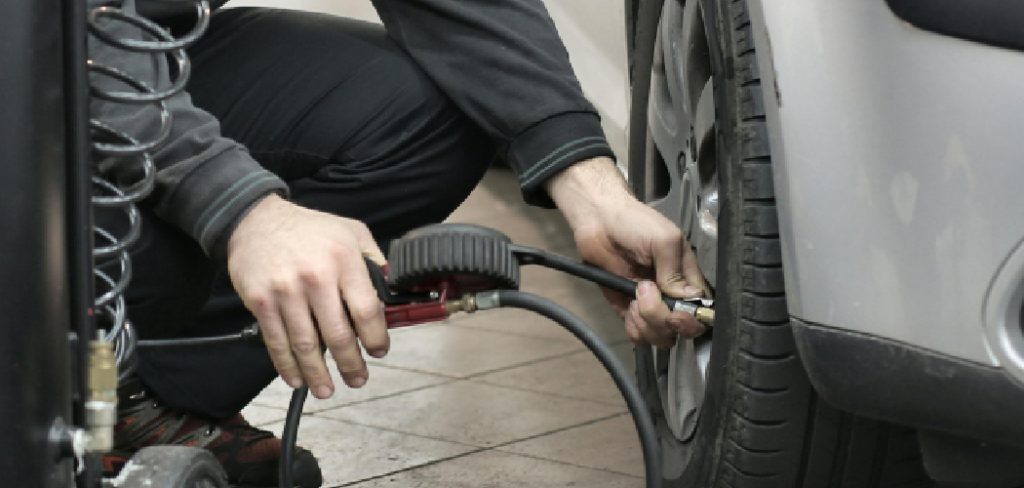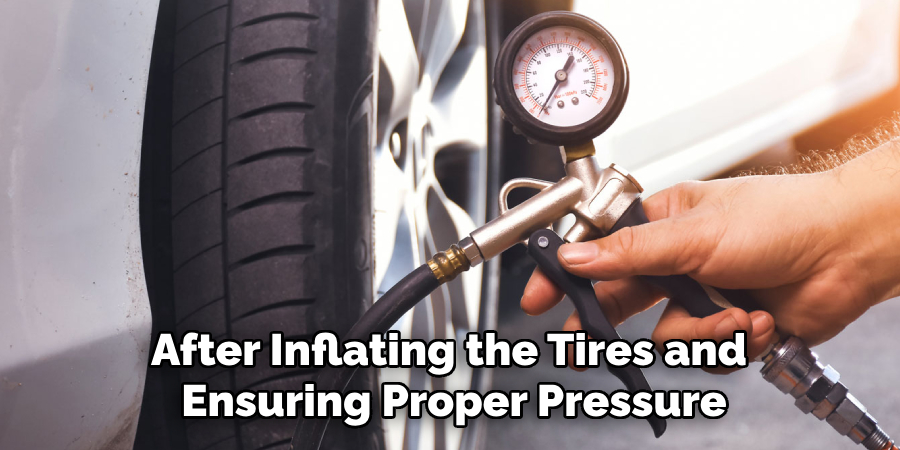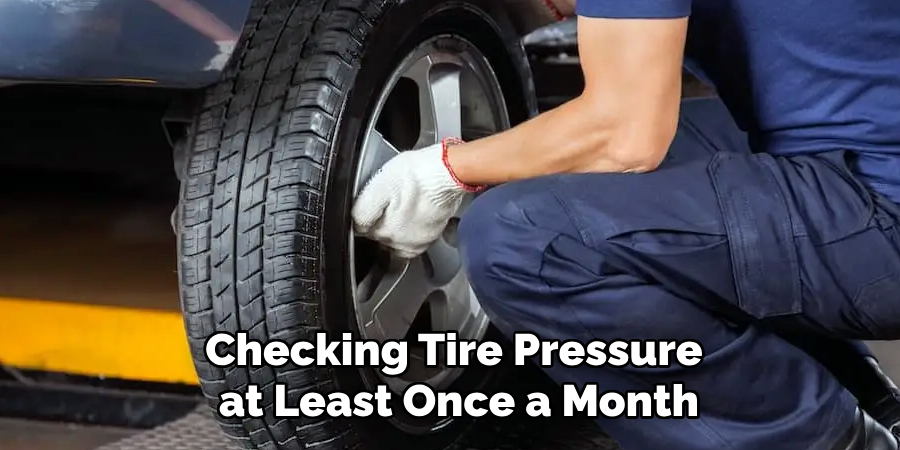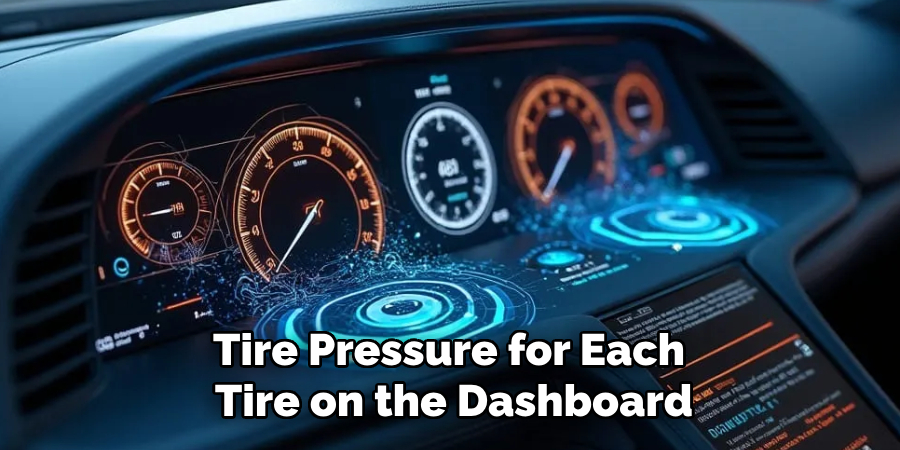The “Service Tire Monitor System” message typically appears on a vehicle’s dashboard when there’s an issue with the Tire Pressure Monitoring System (TPMS).

This system is crucial for maintaining optimal tire pressure, ensuring both safety and fuel efficiency. Understanding the cause of the alert and addressing it promptly can prevent potential tire-related problems down the road.
This guide on how to fix service tire monitor system will walk you through the steps to diagnose and fix common issues with the TPMS.
What is TPMS?
TPMS is a system that monitors the air pressure in each tire and alerts the driver if there’s a significant difference between the recommended and current pressure. Most modern vehicles are equipped with this system, which helps to prevent tire blowouts, improve fuel economy, and extend tire lifespan.
The TPMS typically consists of sensors located inside each tire, a control unit, and an indicator on the dashboard. The sensors can either be direct or indirect. Direct sensors are attached to the valve stem of each tire, while indirect sensors use wheel speed sensors to calculate air pressure based on rotational speeds.
Needed Materials
Before attempting to fix the service tire monitor system, make sure you have the following materials on hand:
Tire Pressure Gauge:
This tool is used to measure and adjust tire pressure accurately. It is essential to have a reliable tire pressure gauge for this task.
Compressor:
If any of the tires have low pressure, you’ll need an air compressor to inflate them. An alternative option would be to visit your nearest gas station with an air pump.
8 Step-by-step Guidelines on How to Fix Service Tire Monitor System
Step 1: Check Tire Pressure
Begin by checking the air pressure in all four tires using a tire pressure gauge. Unscrew the valve cap of each tire and firmly press the gauge onto the valve stem to get a reading.

Compare the measured pressure to the recommended levels stated in your vehicle’s owner’s manual or the sticker located on the driver’s side door frame. If any tire has low pressure, it could trigger the TPMS warning. Make a note of which tires need adjustment before proceeding to the next step.
Step 2: Inflate the Tires
If any tire’s pressure is below the recommended level, attach a compressor to the valve stem and add air until reaching the proper level. Use the tire pressure gauge to check and adjust the pressure as needed.
Repeat this process for all tires that require inflation. If you’re using a gas station air pump, make sure to recheck the pressure with your gauge as they may not always be accurate.
Step 3: Inspect Tire Wear
Check for any signs of excessive or uneven wear on each tire. Uneven wear can cause fluctuations in tire pressure, triggering the TPMS warning. Rotate or replace tires as needed to ensure even wear.
It’s also crucial to inspect the tread depth while checking for wear. Insufficient tread can affect tire pressure and lead to potential safety hazards.
Step 4: Reset TPMS
After inflating the tires and ensuring proper pressure, it’s time to reset the TPMS to clear the warning message on your dashboard. The exact process may vary depending on your vehicle’s make and model.

Start by turning the vehicle’s ignition to the “ON” position without starting the engine. Locate the TPMS reset button, which is typically found under the dashboard or near the steering wheel. Press and hold the button until the TPMS indicator light blinks several times, then release it.
For vehicles without a manual reset button, refer to the owner’s manual for reset instructions, as some cars require using the infotainment system or following specific sequences, such as driving at certain speeds for a set amount of time. After resetting, the warning light should disappear if the issue has been resolved.
Step 5: Replace Faulty Sensors
If the TPMS warning persists after resetting the system, one or more sensors may be faulty and require replacement. TPMS sensors are usually mounted on the valve stems inside the tires, and over time, their batteries or components can fail, especially after years of use.
To replace a faulty sensor, first identify which sensor is malfunctioning. This can be done using a TPMS scan tool, which communicates with the sensors to detect errors or low battery levels. Once the faulty sensor is identified, the tire will need to be removed to access and replace the sensor.
Consult your vehicle’s owner’s manual for specific sensor replacement guidelines or consider taking the vehicle to a professional mechanic or tire shop if you’re not comfortable with this process. After replacing the sensor, ensure it is properly programmed and synced with your vehicle’s TPMS system. Some vehicles may require a resetting procedure or driving the car for a certain distance to recalibrate the new sensor.
Step 6: Check for Other Issues
If the TPMS warning persists even after replacing faulty sensors, there may be other underlying issues causing the problem. Some common causes include damaged wiring, faulty control units, or interference from other electronic devices. These problems require specialized equipment and expertise to diagnose and fix, so it’s best to take your vehicle to a professional mechanic in these cases.
It’s also essential to regularly inspect and maintain your vehicle’s TPMS system to avoid potential issues in the future.
Step 7: Regular Maintenance

To prevent future issues with the TPMS, make sure to perform regular maintenance on your tires. This includes checking tire pressure at least once a month and before long trips, rotating tires every 5-7k miles, and inspecting tread wear regularly. Proper tire maintenance can not only help avoid TPMS issues but also improve overall vehicle performance and safety.
You can also invest in a TPMS maintenance tool, which can help monitor the pressure and temperature of your tires continuously. Some advanced tools even provide real-time data to your smartphone or dashboard display for easier monitoring.
Step 8: Be Proactive
Always address TPMS warnings as soon as they appear. Ignoring them may lead to serious issues, such as tire blowouts or reduced fuel efficiency due to underinflated tires. Regularly checking on your vehicle’s TPMS system and addressing any warnings promptly will help ensure safe and efficient driving.
Following these step-by-step guidelines on how to fix service tire monitor system can help you fix the Service Tire Monitor System and prevent future issues. Regularly maintaining your tires and TPMS system is crucial for safe driving, so make it a part of your routine vehicle check-ups. With proper care, your TPMS can provide accurate and timely warnings, helping you avoid potential hazards on the road. Keep your tires properly inflated and maintained to ensure a smooth and safe driving experience for miles to come.
Additional Tips
- Always carry a tire pressure gauge in your vehicle so you can check tire pressure anytime.
- Use the recommended tire pressure for your specific vehicle, which can be found in the owner’s manual or on a sticker inside the driver’s door.
- If you notice any unusual vibrations, strange noises, or issues with handling, get your tires and TPMS system checked by a professional mechanic as soon as possible.
- Consider investing in a set of winter tires if you live in an area with harsh weather conditions, as they may require different pressure levels than regular tires.
- When replacing tires, make sure to purchase ones that are compatible with your vehicle’s TPMS system. Improperly installed sensors can cause malfunctions and inaccuracies.
Remember to always prioritize safety when it comes to your vehicle’s tires and TPMS system. Regular maintenance and prompt addressing of any warnings can help prevent potential hazards and ensure a comfortable driving experience.
Frequently Asked Questions
Q: How Do I Know if My Vehicle Has a TPMS issue?
A: The TPMS warning light will appear on your dashboard. Additionally, you may experience changes in ride quality or handling and notice unusual noises coming from the tires.
Q: Can I Ignore the TPMS Warning Light?
A: It is not recommended to ignore the TPMS warning light, as it can indicate potential hazards and issues with your tires. Regularly checking tire pressure and addressing any warnings promptly is essential for safe driving.
Q: Do All Vehicles Have a TPMS System?
A: All vehicles manufactured after 2007 are required to have a TPMS system installed by law in the United States. However, some older or specialized vehicles may not have this system. Check your owner’s manual or consult with a mechanic to determine if your vehicle has a TPMS system.
Q: Is There an Alternative to Using a TPMS Scan Tool?
A: Some vehicles have a built-in feature that displays the tire pressure for each tire on the dashboard. If your vehicle has this feature, you can use it to determine which sensor is malfunctioning instead of using a TPMS scan tool. However, using a scan tool is still recommended for accurate and efficient diagnosis.

Q: Can I Replace My Own TPMS Sensors?
A: While technically possible, replacing TPMS sensors requires specialized equipment and expertise to ensure proper programming and syncing with your vehicle’s system. It’s best to leave this task to professionals or experienced individual mechanics.
Conclusion
Maintaining your vehicle’s TPMS system is an essential part of ensuring your safety on the road. By following the steps outlined in this guide on how to fix service tire monitor system, you can effectively address TPMS issues, prevent future malfunctions, and keep your tires in optimal condition. Regular tire maintenance, prompt attention to warning lights, and professional assistance when needed will help extend the life of your tires and enhance overall vehicle performance.
A well-maintained TPMS system not only saves you from unexpected breakdowns but also contributes to better fuel efficiency and safer driving experiences. Prioritizing tire health and TPMS care allows you to drive confidently, knowing that your vehicle is equipped to alert you to potential issues before they become serious problems.
